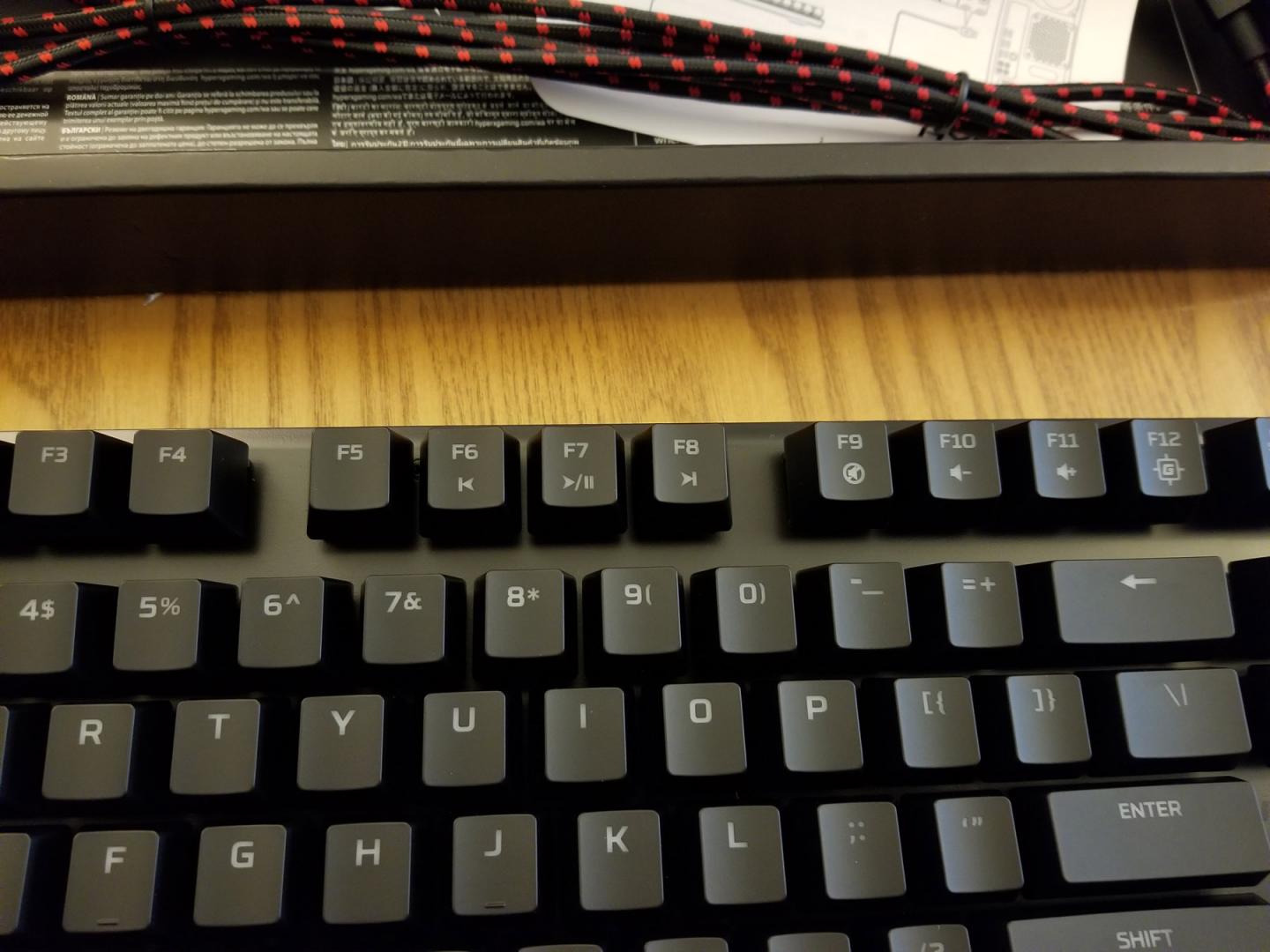

Last fall, HyperX joined the mechanical keyboard market with the debut of their Alloy FPS Mechanical Gaming Keyboard. After an overwhelmingly positive response from gamers and reviewers (you can check out our review here), this summer saw two new versions of the Alloy being announced and released: the Alloy Elite and the Alloy FPS Pro.
Both the Alloy Elite and Alloy FPS Pro take the Alloy as a basis and go in two different directions. The Alloy Elite went slightly bigger, incorporating a media/keyboard feature panel and detachable wrist guard, which were both features I appreciated when I reviewed it back in July. The Alloy FPS Pro, released last week, went slightly smaller by taking a “tenkeyless” approach. By ditching the Numpad, the keyboard becomes a much more compact affair, which is an attractive feature for FPS players who want additional desk space.

In case you’re not familiar with any previous versions of the Alloy, let’s do a quick rundown of the FPS Pro’s features that it shares with its brethren. The FPS Pro has red backlighting with six LED modes (Solid, Breathing, Trigger, Explosion, Wave, and Custom) and five brightness levels. Users have the ability to control media effects (e.g. volume, pause/play, skip forward/backward, etc.) by using the function key and the F6 - F11 keys. It also has a “Gamer Mode” (toggled by hitting the function + F12 keys together), a handy feature that disables the Windows key. On the physical side of things, it has a solid steel frame and Cherry MX switches with the currently available version possessing Cherry Reds. Like all Alloy keyboards, it is plug-and-play with no required software, a direction that HyperX has been fully embracing in all their new peripherals.
Abbreviated Keyboard Specifications:
Keyboard Switch: Cherry MX Type: Mechanical Backlight: Single color, Red Light effects: 6 LED modes and 5 brightness levels Connection type: USB 2.0 (1 USB connector) Anti-ghosting: 100% anti-ghosting Cable Type: Detachable, braided Length: 1.8mDimensions
Width: 359.00mm Depth: 130.00mm Height: 34.50mm Weight (keyboard and cable): 900gAs mentioned before, the most noticeable difference between the FPS Pro and the other two Alloys is the lack of Numpad: a trade-off of surface space versus additional keys. As a PC gamer, you probably already know what side of that trade-off you favor, even if you’ve never used a tenkeyless keyboard. It’s no surprise that HyperX named this the “FPS Pro,” since FPS gamers playing low mouse sensitivity highly value having more space for their mouse arm. I found the extra desk space to be quite freeing, though at times I did miss the Numpad for typing out strings of numbers or using the calculator during my non-gaming computer time.
There are several smaller differences as well, though. Both the Alloy and Alloy Elite came with an extra set of textured keycaps for the W, A, S, D, and 1-4 keys. The FPS Pro does not come with these keycaps, though HyperX just started selling packs of textured keycaps for W, A, S, D, Q, E, R, and F keys (the most-used keys for FPS and MOBA style games) with an included keycap removal tool, so you can still get them if they’re desirable to you. Also missing is the soft case for transportation that the Alloy included. There’s no spare USB port on the back of the keyboard like the other Alloys, but as a corresponding trade-off, the FPS Pro only requires one USB port to power. One improvement that the FPS Pro has in common with the Elite is that the keyboard now remembers to keep Gamer Mode on when the computer is restarted. This was one of my small complaints with the Alloy’s Gamer Mode and I’m glad to see it seems to have been consistently addressed in future versions.
Both the Alloy Elite and Alloy FPS Pro take the rock-solid foundation of the Alloy FPS and expand or compact the size of the keyboard respectively. The FPS Pro runs cheaper than the other two Alloys ($80 vs. $100 for the Alloy and $110 for the Alloy Elite), but if you add on a set of keycaps for $15 (which gets you the most parallel experience possible), it’s very closely in-line with the price of the Alloy FPS. The price doesn’t feel unjustified, however, as it’s the same excellent experience of the Alloy with a more compact footprint specifically geared towards people who care about that type of thing. If you’re the type of gamer who wants the most desk surface space possible and won’t miss the Numpad, I heartily recommend the FPS Pro. The Alloy family of keyboards is one that I continue to strongly endorse, and having more variations to fit gamers’ preferences can only be considered a good thing.